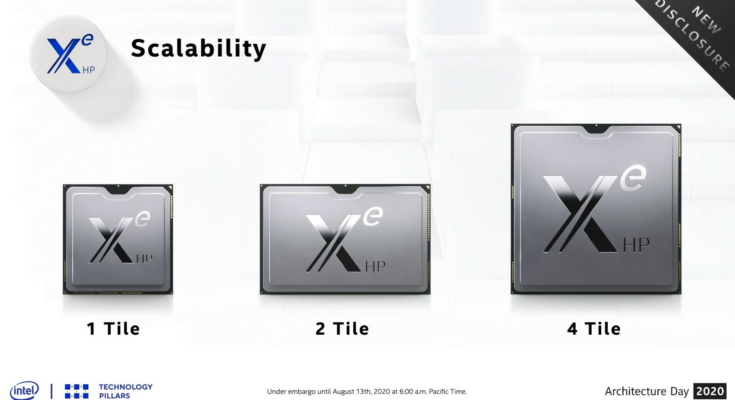Last week, Raja Koduri went to Twitter to explain Intel’s intent to discontinue the focus on Intel Xe-HP and implement that technology to the newer Intel Xe-HPG GPUs, a newer and more focused ecosystem that they have a five-year plan of growth for developments in AI, gaming and visual cloud-based technology, and higher optimization and performance. This was surprising to a large audience due to the amount of time spent on discussing Intel Xe-HP publicly.
Intel Focuses Its Xe-HPG At The Gaming & Visual Cloud / AI Inference GPU Segment After Xe-HP’s Cancellation
Intel’s Xe-HP GPU was originally announced during the middle of 2020, advertised as a “multi-tile graphics series designed for data centers, with the main purpose as media super-computer accelerators.” Intel has even gone as far as creating three separate offerings with between “1 to 4 tiles.” It will now help Intel for utilizing the Intel Xe-HPs for their own in-house cloud servers.
We leveraged Xe HP to build developer ecosystem for HPC, AI and Visual cloud. It’s being used on-site at Argonne and other customers.
We’ll have Xe HPG based data center products for visual cloud/AI Inference and Xe HPC based products for HPC/AI Training @intelgraphics pic.twitter.com/iHZa2dMLqd— Raja Koduri (@Rajaontheedge) October 30, 2021
Koduri went on to further explain that Xe-HP GPU would help develop the “ecosystem for Ponte Vecchio’s architecture.” As far as product lines go, the Xe-HPG lines will replace Xe-HP, adding “AI interference and visual cloud” technology, which was the original intent of Xe-HP.
It is speculated that, due to the focus of Intel Xe-HPG on media in terms of analytics, processing, immersion, and cloud technology, such as cloud gaming and cloud graphics, that Intel is beginning to compete with GeForce NOW, Google Stadia, or Amazon Luna.
What is interesting to note, however, is the usage of media conversion servers/video content providers. Intel was one of the largest hardware providers for the last World Olympics held in Tokyo, Japan. Intel’s Xeon servers were the primary utilization to help stream an unbelievable 8K 60fps HDR video that was transferred and implemented directly to the cloud to televisions everywhere. Even though a large group of consumers was unable to access the full resolution capabilities of the signal, the fact that this technology is now available is proof that we have evolved yet again to what is possible.
Lastly, Koduri also discussed Intel Xe-HPG is planned to support high-end applications such as 3DS Max, extending their Xe-HPG to the high-end workstation sections. It could be implied at some point that the Xe-HPG microarchitecture will be accessible for to up to three different markets, just as the same as their competitors NVIDIA and AMD with their Ampere and RDNA2 architectures, respectably.
| GPU Family | Intel Xe-LP (1st Gen) | Intel Xe-HPG (1st Gen) | Intel Xe-HP (1st Gen) | Intel Xe-HP (2nd Gen) | Intel Xe-HPC (1st Gen) |
|---|---|---|---|---|---|
| GPU Segment | Entry-Level (Integrated + Discrete) | Mainstream / High-End Gaming (Discrete) | Datacenter & Workstation | Datacenter & Workstation | High Performance Computing |
| GPU Gen | Gen 12 | Gen 12 | Gen 12 | Gen 13 | Gen 12 |
| Process Node | Intel 7 | TSMC 6nm | Intel 7 | TBA | Intel 7 (Base Tile) TSMC 5nm (Compute Tile) TSMC 7nm (Xe Link Tile) |
| GPU Products | Tiger Lake DG1/SG1 Cards | ARC Alchemist GPUs | Arctic Sound | Jupiter Sound | Ponte Vecchio |
| Specs / Design | 96 EUs / 1 Tile /1 GPU | 512 EUs / 1 Tile / 1 GPU | 2048 EUs / 4 Tiles Per GPU | TBA | 8192 EUs / 16 Tiles per GPU |
| Memory Subsystem | LPDDR4/GDDR6 | GDDR6 | HBM2e | TBA | HBM2e |
| Launch | 2020 | 2022 | Cancelled | 2023? | 2022 |



